Description
The Orange Spot Rabbitfish (Siganus guttatus) is a striking fish known for its vibrant colours and distinctive markings. It can reach a maximum size of approximately 8 inches (20 centimetres), making it a relatively small-sized fish.
Taxonomy
The Orange Spot Rabbitfish belongs to the genus Siganus and the family Siganidae. It is closely related to other rabbitfish species, such as Siganus vulpinus and Siganus lineatus.
Natural Habitat
The natural habitat of the Orange Spot Rabbitfish is typically found in coral reef ecosystems with clear tropical waters. Its habitat consists of coral formations, rocky outcrops, and areas with abundant marine vegetation. These fish prefer shallow coastal areas and lagoons, where they can find shelter and feed on various algae and sea grasses.
Keeping Orange Spot Rabbitfish Healthy:
The care level for Orange Spot Rabbitfish is generally moderate, requiring some attention to their specific needs. Maintaining stable water conditions is crucial, with a recommended temperature range of 74°F to 82°F (23°C to 28°C). Regular water testing, proper filtration, and regular water changes are necessary to ensure optimal health.
Special Requirements and Feeding
Orange Spot Rabbitfish are herbivores and primarily feed on various algae and sea grasses in the wild. In captivity, it is essential to provide a well-balanced diet that includes a variety of seaweed and algae-based foods. Supplementing their diet with occasional treats of live or frozen brine shrimp and mysis shrimp can enhance their nutrition.
How Many Should I Keep?
When considering how many Orange Spot Rabbitfish to keep, it is important to consider the size of the tank and the compatibility with other tank mates. As these fish can grow up to 8 inches (20 centimetres) in size, it is recommended to keep them in a tank with a capacity of at least 50 gallons (190 litres) to provide ample swimming space.
Lighting Preference
Orange Spot Rabbitfish do well in aquariums with moderate to high lighting levels. Adequate lighting not only enhances their vibrant colours but also promotes the growth of beneficial algae, which can serve as a natural food source for these fish.
Suitable Tank Mates
Orange Spot Rabbitfish are generally peaceful and can coexist with a variety of other reef-safe fish species. However, it is important to consider their size and temperament when selecting tank mates. Suitable tank mates include other peaceful reef fish such as tangs, gobies, and wrasses.
Reproduction in the Wild
In the wild, the Orange Spot Rabbitfish (Siganus guttatus) follows a specific reproductive process to ensure the survival of their species.
During the breeding season, male Orange Spot Rabbitfish become more aggressive and territorial as they vie for the attention of the females. They display and may engage in territorial disputes with other males.
Once courtship is successful, the female releases her eggs into the water column, while the male releases sperm to fertilize them externally. This type of external fertilization is common among many marine fish species.
Breeding Siganus guttatus
Breeding the Orange Spot Rabbitfish in captivity can be a rewarding experience for dedicated aquarists. Successful breeding requires careful attention to the setup, courtship, spawning, and rearing processes.
- Set Up
To facilitate breeding, a well-maintained aquarium with appropriate parameters is crucial. The water temperature should be maintained between 74°F and 82°F (23°C to 28°C), and the pH level should be around 8.0 to 8.4. The aquarium should provide ample hiding places, such as rocks or live rock structures, where the rabbitfish can lay their eggs.
- Courtship/Spawning
The courtship behaviour of the Orange Spot Rabbitfish involves vibrant displays and territorial disputes. Males may exhibit increased aggression and chase females to establish dominance. Once courtship is successful, the female releases her eggs, and the male fertilizes them externally in the water column.
- Rearing
After spawning, it is crucial to remove the eggs from the main aquarium to prevent predation and improve survival rates. The eggs can be carefully collected using a mesh net and transferred to a separate rearing tank or a specialized breeding apparatus. Maintaining stable water conditions, appropriate lighting, and providing suitable food for the developing larvae are essential for their growth and survival.
Sexual Dimorphism
Sexual dimorphism in the Orange Spot Rabbitfish is not prominent, making it challenging to visually differentiate between males and females. Both sexes exhibit similar vibrant colours and patterns.
Distribution
The Orange Spot Rabbitfish is naturally distributed in the Indo-Pacific region, including areas such as the Great Barrier Reef, Indonesia, and the Philippines. While there may be captive-bred or line-bred strains available, the original fish come from the wild populations in these regions.
Summary
The Orange Spot Rabbitfish (Siganus guttatus) is a captivating fish species known for its vibrant colours and distinctive appearance. Their reproductive process involves courtship, spawning, and rearing of the offspring. Breeding the Orange Spot Rabbitfish requires careful setup, courtship rituals, and appropriate rearing techniques to ensure successful development. While sexual dimorphism is not pronounced in this species, both males and females exhibit vibrant colours. This fish originates from the Indo-Pacific region, including areas such as the Great Barrier Reef. It is important to appreciate the beauty of these fish while also considering their natural distribution and conservation efforts.
The Fish pictured here are representative only and the livestock you receive may vary in pattern, coloration, and shape.

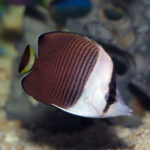
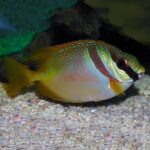


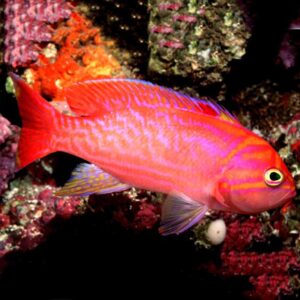
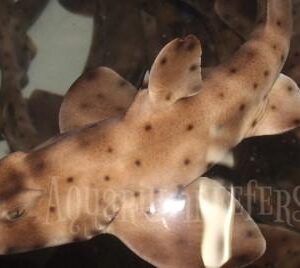
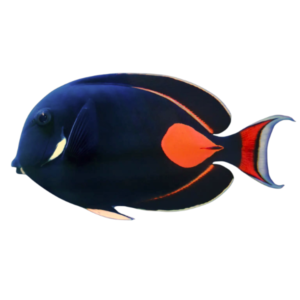
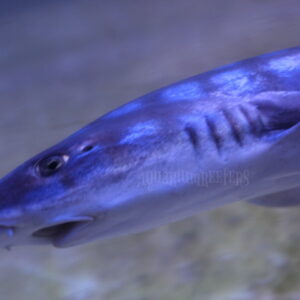
Reviews
There are no reviews yet.